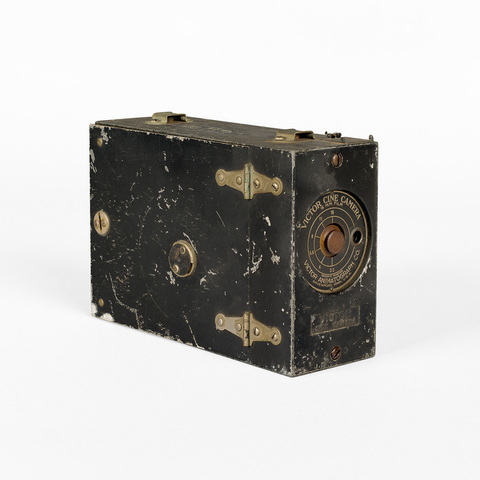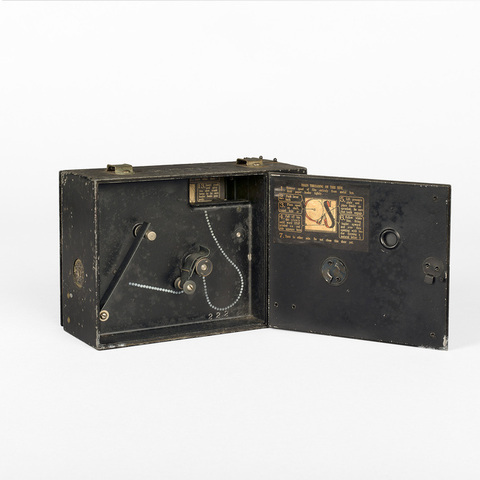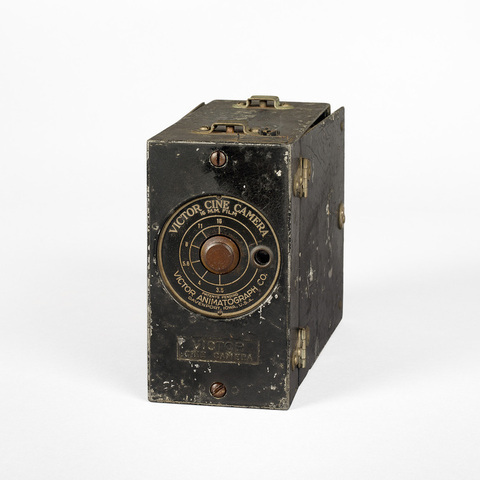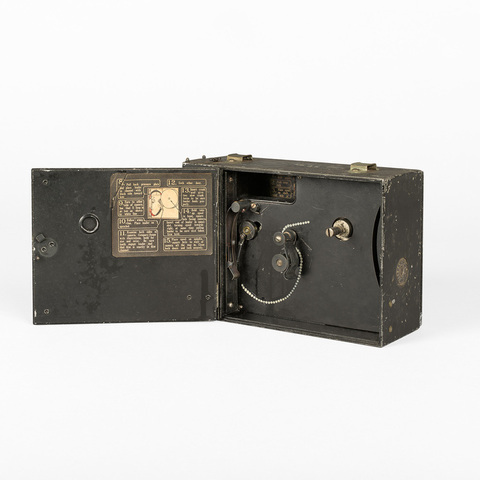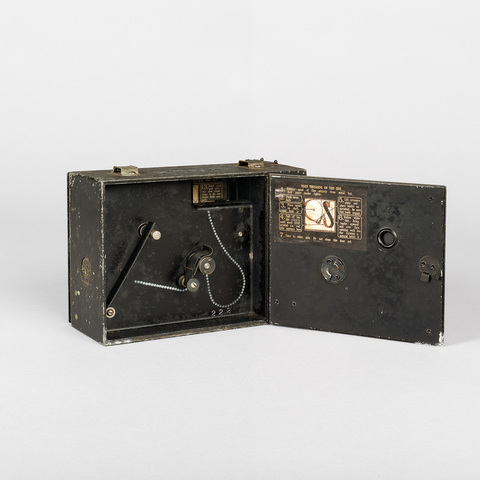Caméra film 16 mm
Fiche détaillée
Type de l'appareil
entraînement du film 16 mm par deux griffes ; deux débiteurs dentés ; emplacement intérieur pour deux bobines co-axiales de 30 m. ; mode d'emploi sur deux étiquettes collées aux revers des portes ; compteur de pieds ; six diaphragmes différents sur un disque réglable
Auteurs
Victor Alexander Ferdinand
Davenport, Iowa
Fabricants
Victor Animatograph Company
Davenport, Iowa
Utilisateurs
Victor Alexander Ferdinand
Davenport, Iowa
Distributeurs
Victor Animatograph Company
Davenport, Iowa
Sujet du modèle
Informations non disponibles
Objectif
Informations non disponibles
Taille de l'objet
Ouvert :
Informations non disponibles
Fermé :
Longueur : 21 cm
Largeur : 8.5 cm
Hauteur : 15 cm
Diamètre :
Informations non disponibles
Taille de la boîte de transport
Informations non disponibles
Remarques
Marques : "Victor Cine Camera 16 mm Film. Patents pending. Victor Animatograph Co. Davenport Iowa, U.S.A." ; "Victor Cine Camera".
"My invention relates to mechanism for feeding film intermittently through a cinematographic camera and has more particular reference to the shuttle or film engaging structure of such a mechanism by which the film is moved step by step past the aperture and lens of the camera. An object of my invention resides in providing a film engaging and feeding device that is timed so that it will engage the perforations of the film successively and will permit periods of rest between the intermittent movements of the film that will be considerably greater than the time consumed in the actual movement of the film. In carrying out my invention I employ a film engaging shuttle which, after it moves out of one perforation, will slide along the film past the next perforation and reverse its movement and go forward to engage the perforation that had just been passed. Thus the structure consumes about three-fourths of the cycle of motion of the shuttle in disengagement with the film, with the film stationary, and only one-fourth of its cycle of motion in engagement with and moving the film. This permits the shutter of the camera to be opened for practically three-fourths of its revolution which permits a long exposure of the film. The structure I have herein disclosed is designed especially for use in motion picture cameras for use in motion picture cameras for use by amateurs, and the film moving mechanism is very small but is, nevertheless, extremely reliable and is made of a minimum of parts that are simple in construction and not liable to get out of order. It is therefore an object of my invention to provide a mechanism for intermittently moving the film that is compact in construction, dependable in operation, economical to manufacture, and novel in construction, and I prefer to carry out my invention and accomplish the aforesaid objects in substantially the manner hereinafter fully described [...]" (Alexander Ferdinand Victor, USP n° 1 706 089, application filed December 10, 1923, patented March 19, 1929, "Film feed for cameras").
"In 1923, I designed and placed on the market the world's first 16 millimeter projectors and cameras. The Eastman Kodak Company made the world's first 16 millimeter film. Of almost greater importance, however, is that in 1918 I proposed, at a metting of the Society of Motion Picture Engineers held in Rochester, New York, the creation of a new and separate standard for motion pictures used outside the theatre, or in which is usually called the non-theatrical field. [...] It was proposed, from some quarters, that the new film be made one-half the width of the theatre film, or 17,5 mm. The objection to this width was that inasmuch as the type of raw stock used for 35 mm was cheaper it would make possible a "black market" in which unscrupulous persons might split regular thirty-five mm film and nullify the entire effort for a safe product. It was decided that the new film should be made 16 mm in width, which was a millimeter and a half less than a split thirty-five, and with film channels made to a 16 mm dimension, it would prevent the uses of split theatre film. With these preliminaries out of the way and the assurance of the Eastman Company that it would make the new film and would process this film for amateurs, I immediately began the work of designing a 16 mm camera and projector. By August, 1923, we were in production. The world's first printed annoucement of the Victor Cine Camera and Projector and the new Eastman film was made in the forme of full page advertisements in the two leading Davenport, Iowa, newspapers on August 12, 1923. That day I definitely relinquished all interest in the 28 mm standard and have since that time advocated and devoted my company's energies to the 16 mm width. Although I had the good fortune to be the first to design and manufacture 16 mm cameras and projectors, it does not mean that I am entirely responsible for its success and growths. To Eastman Kodak belongs a major share of the honors" (Alexander F. Victor, "The History and Origin of 16 Millimeter", American Cinematographer, November, 1945, p. 376-396).
